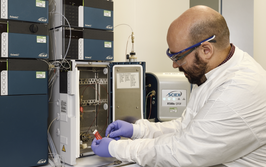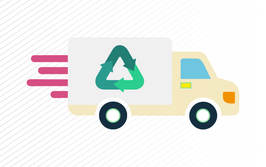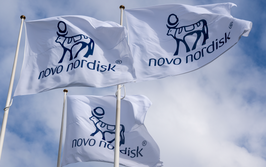Counterfeit Medicines: Getting On The Right Track
Track and trace is helping to deter counterfeiters, but what about regions that do not yet have initiatives in place? We speak with Advanco CEO Alf Goebel to learn more.
| 5 min read | Interview

Credit: Interviewee supplied
Counterfeit medicines remain a threat globally. The EU and the US already have track and trace systems in place, and other regions are following suit.
The growing number of governments using track and trace systems in the pharmaceutical industry is partly down to an increase in mandates originating from APAC nation governments. Many serialization solution vendors are now working to expand their geographical presence to other regions. We spoke to Advanco CEO Alf Goebel to find out why the APAC region is seeing considerable attention – and how else technology can change pharma’s future.
How big is the threat of counterfeit medicines in the online age?
The threat posed by counterfeit medicines has been present for many years. However, the internet, where drugs can be sold directly to consumers without the need for any physical premises, adds to this threat.
I want to be very clear. We are not criticizing regulated, legal online pharmacies. They provide a valuable service for many people and are now established as part of the fabric of the healthcare system in many geographies. However, the modus operandi does provide criminals with the means to distribute their goods in a manner that means they are much less likely to be traced.
It is worth reminding ourselves of the scale of the problem. Figures from the Pharmaceutical Security Institute show that 6,615 pharmaceutical crime incidents were reported in 2022, up 10 percent on the year before.
The greatest number was recorded in North America (3,029) followed by the Asia Pacific (1,738), Latin America (934), the Near East (825), Eurasia (650), Europe (278) and Africa (185). The order of this list is largely due to how well countries in these regions are effectively identifying pharmaceutical crime through law enforcement activity and inspections by drug regulatory agencies.
According to the World Health Organization, roughly 10 percent of medical products circulating in low- and middle-income countries are substandard or falsified. In sub-Saharan African nations, this share is believed to be even higher – rising up to 19–50 percent. However, the actual number of incidents of fake drugs being manufactured and distributed may be far higher, considering the many cases where counterfeits have not been detected or reported.
I think it is necessary to see the issue as a global one that affects everyone. To fight the overall problem, every country needs to work hard to deploy resources.
What is driving expansion in the APAC region?
Increasing demand for serialization solutions worldwide and the emergence of Singapore as a pharmaceutical research and development hub are important factors in their own right that influenced our decision to expand in the APAC region.
Governments across the world are understanding that track and trace is one of the most effective methods to provide a guarantee to consumers that a particular medicine is genuine. We are now seeing mandatory regulations evolving in APAC, with India, China, and South Korea already having them in place; Indonesia and Malaysia are expected very soon, and other countries are working on their strategies. In the middle of such major developments, a dedicated APAC-focused resource will enable us to serve the region much more closely.
What are the key challenges in implementing track and trace systems?
Some pharma serialization solutions are perhaps too complex – and also inflexible. Regulations change and you need to be able to accommodate those changes. As an example (and something that I argue against), many providers will install specific software that can only be used with their hardware. When this happens, the pharma company risks losing the ability to either expand or adapt its manufacturing capabilities because of vendor lock in. Furthermore, it results in ever-increasing costs because of the by-design inflexibility of the all-in-one vendor systems, as well as the ongoing upgrade costs.
The serialization sector needs to be far more transparent. If there were to be another pandemic, the pharma sector would face challenges that would demand the ability to identify and deploy the most appropriate action. In such a scenario, the ability for serialization and traceability solutions across the board to work together in unison would be a massive advantage. It would enable packaging serialization solutions to coordinate in warehouses and shop floors right across the globe. Such capability could potentially save millions of lives in an emergency.
The COVID-19 pandemic saw the rapid design and roll-out of an entirely new pharmaceutical cold chain capable of preparing, shipping, and storing vaccines in temperatures as low as minus 80 degrees. This was done through collaboration – and we need to ensure that collaboration of this kind continues, so that we can be prepared for the next pandemic.
How else can new technologies help shape the future of the industry?
Health itself is becoming increasingly digital. Think of all the opportunities in healthcare, from telehealth solutions to wearable devices. There are a whole raft of personal medicine applications to manage the patient treatment lifecycle at an individual level.
For pharmaceutical manufacturers, technology can help increase the efficiency of systems, products, and services. The cloud, for example, has rewritten the way computing works, allowing firms to power their system and retain full records without a single server on site. Computing and automation is also being used to reduce the risk of human error. In the future, I expect robotics to become much more affordable and available to organizations of every size. From picking products at a warehouse to getting them ready to ship, autonomous robots can quickly and safely support manufacturers. Likewise, we will see distribution centers that will use autonomous cranes and trucks to streamline operations as they accept shipping containers.



















